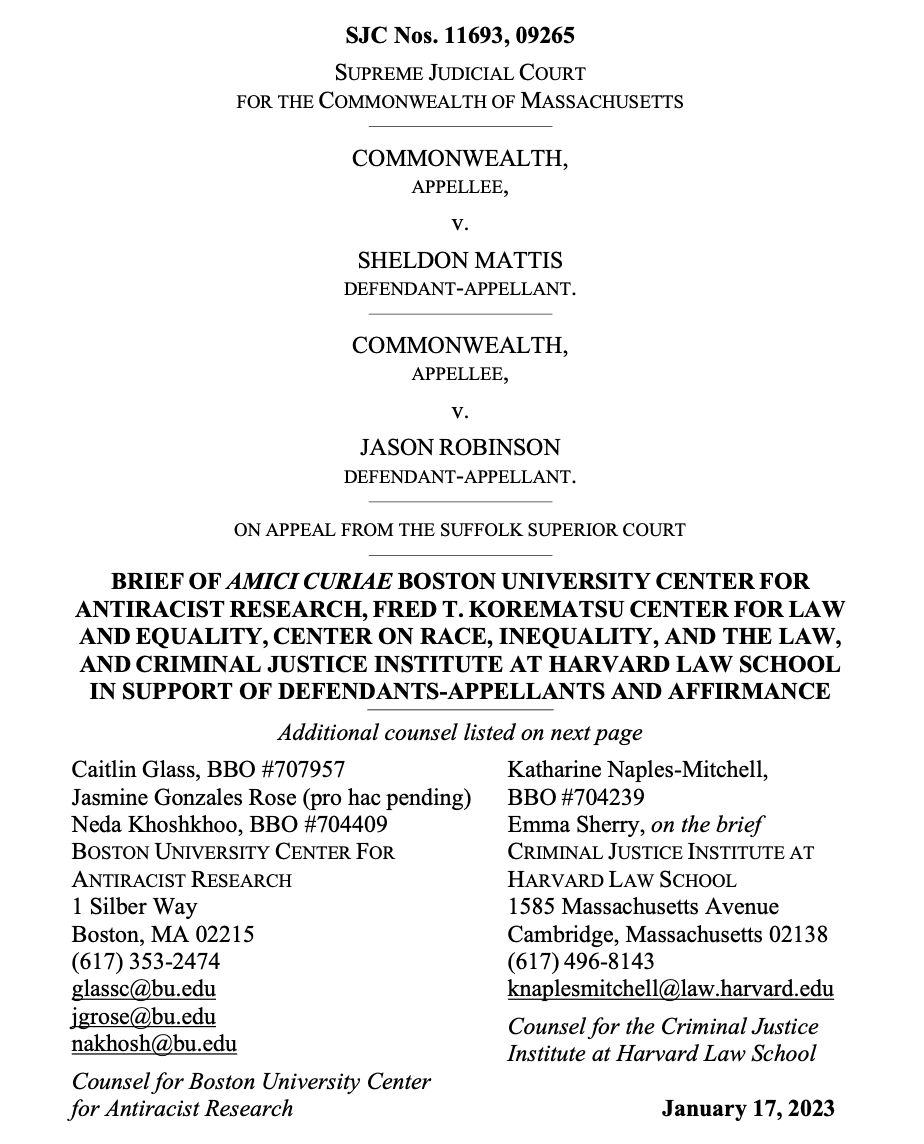
Summary of Argument
The extreme racial disparity among late adolescents serving LWOP highlights the arbitrariness and lack of proportionality in the imposition of such sentences and demonstrates why they violate the Massachusetts Declaration of Rights. Amici describe the nature of that racial disparity, examine why it occurs, and explain why it necessitates a categorical ban on LWOP for 18-to-20-year-olds.
First, the racial disparity in LWOP sentences for 18-to-20-year-olds is uniquely severe. Black people are alarmingly overrepresented in Massachusetts prisons overall (infra at 16-18), but even setting aside this pronounced baseline racial disparity, Black 18-20-year-olds are dramatically more likely than White 18-20- year-olds to be sentenced to die in prison (infra at 19-23). The comparative Black/White disproportionality for 18-20-year-olds serving LWOP is more than twice that of (1) the state prison population and (2) those serving LWOP for offenses at 21 or older. Black people comprise less than 30% of the state prison population, but more than 45% of late adolescents sentenced to die in prison. The inverse is true for White people, who comprise more than 40% of the state prison population, but less than 30% of the 18-20 LWOP population. (Infra at 20-23.) This disparity cannot be explained by overall patterns in LWOP sentences. Consistent with their representation in state prisons, White people comprise the plurality of people serving LWOP overall and the plurality of people serving LWOP for offenses at age 21 or above. But Black people are the plurality of people serving LWOP for offenses committed at ages 18-20. Indeed, 1.6 times more Black people than White people are serving LWOP for offenses at 18-20. Factoring in the Commonwealth’s overall demographics, Black people are serving LWOP for offenses at ages 18-20 at a rate more than sixteen times the rate for White people. (Infra at 23-26.)
Second, disparate policing, prosecution, and punishment contribute to these observed disparities. Each of those systemic biases are driven by perceptions of young Black people as threatening, more culpable, and older than their biological age. (Infra at 26-33.) Disparate prosecution of joint venture and felony murder charges may particularly explain the uniquely pronounced racial disparities in LWOP among late adolescents.2 (Infra at 34-38.)
Third, continuing to permit discretionary LWOP will not provide an adequate constitutional safeguard. The implementation of discretionary LWOP systems for juveniles in other jurisdictions demonstrates that such sentences are often arbitrary, unnecessarily long, and more disproportionate by race than those under mandatory LWOP. (Infra at 38-44.) The result of discretionary LWOP for 18-to-20-year-olds in Massachusetts would almost certainly be the same: discretionary LWOP sentences would continue to fall most heavily on young Black people.